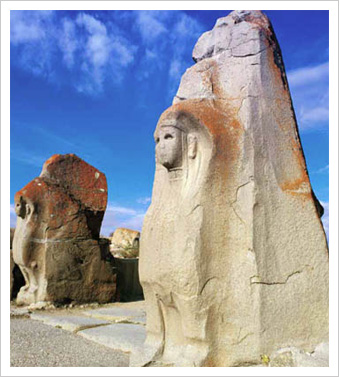Hattusha, which was the capital of the Hittite Empire during antiquity, has been in the List of World Heritage since 1986 on cultural criteria. Hattusa on cultural criteria. Hattusha, which is an open-air archaeological museum, was founded around 1600 BC and became the focus of the arts and architecture of that time. Hattusha consists of two sites, the Lower City and the Upper City. Visible at the Lower City are the remains associated with civic life. The Great Temple is the principal cult building of the city. At the Upper City, the Temple Neighbourhood, encompassing several temples, Is noteworthy. Due to its two cult rooms, this temple is considered as it was devoted to the storm god and Arinna's sun goddess which are the greatest gods of the Empire. The Upper City Is situated on a broad arch and was protected by walls to the south. There were five gates on the walls. At the southernmost edge of the city walls, which Is the highest point of the city, stand the Yerkapi ramparts and the Sphinx Gate. The King's Gate and Lion Gate are situated at either end of the southern walls. The lion sculptures on the outer face of the Lion Gate are some of the best examples of Hittite stone carving.
Yazillkaya sanctuary, which Is situated 2 km north west of Hattusha, is considered to be the most significant open air temple of the city. It consists of two rock cut rooms screened off by a single story building reflecting the architectural style of the Hlttites. The rock cut rooms of Yazillkaya Sanctuary are called as the "Greater Gallery" (Room A) and the "Lesser Gallery" (Room B).
The western end of the rock face of the Greater Gallery (Room A) is decorated with a relief of gods, and the eastern end is decorated with a relief of goddesses. The figures of both ends face the central section, where the eastern and western rock faces meet the northern rock face. This is where the main stage was set. The Lesser Gallery (Room B), which has a separate entrance Is protected by a relief of demons with lion heads, human bodies, and wings. The relief decorating the western rock face of Room B depicts twelve gods lined up to their left, and on the eastern rock face there are reliefs depicting a deity-headed upright sword, which is believed to represent the god Nergal of Underworld, and the God Sharrumma escorting King Tudhaliya IV. In this section, besides the well preserved reliefs, there are three rock cut niches. It is believed that these niches were used for placing gifts or possibly urns containing the ashes of members of the Hittite royal family.
Hattusa is waiting for those who would like to trace the Hittite civilization by witnessing the history. |
|
 |






